Contents
- 1 Which elements of your business feed off of each other to accelerate growth?
- 2 The simplest “word-of-mouth engineering” tactic: Refer-a-friend
- 3 Target a segment of your audience which has exposure
- 4 The “I want to become like you” word-of-mouth approach
- 5 Put a clear credit on the output your customers create
- 6 Use the output of your users as input to other marketing channels
- 7 Word of mouth does not have to be left to chance
Marketing usually works like this:
You have a product -> You find a way to get users -> The users sign up and use your product
There’s a small problem with this approach: Everything works in one direction. What happens after the user signs up and uses the product? We all hope it’s this:
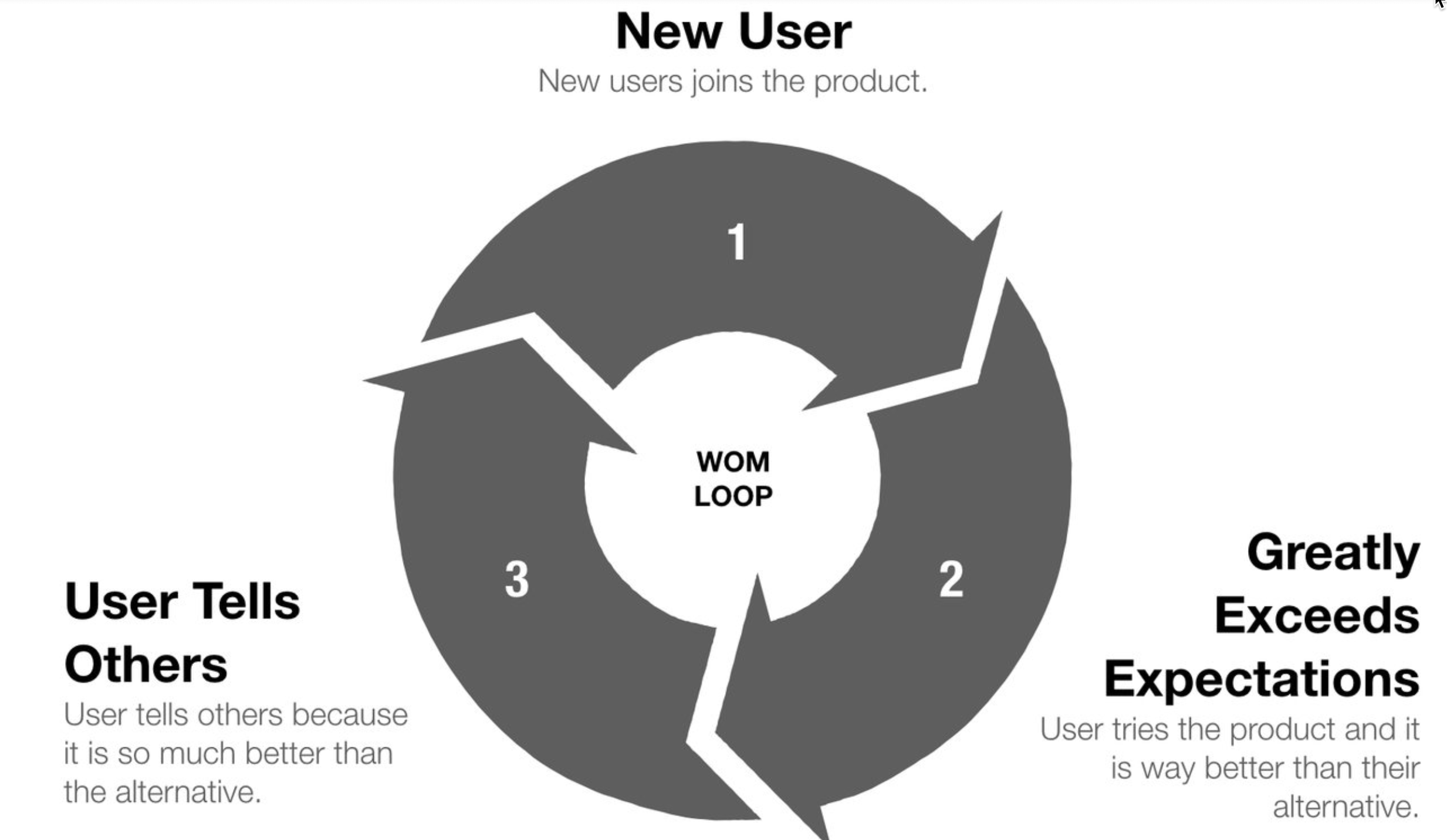
Are there any more deliberate ways to engineer word-of-mouth than just having a great product and hoping people will tell their friends about it?
They answer is a clear and resounding yes.
Which elements of your business feed off of each other to accelerate growth?
The goal with engineering virality is to create a flywheel. We want to become less reliant on the traditional marketing tactic cycle:

…and create a loop where each new user brings more users, and each new user brings more users, etc. If you know what compound interest is, you’ll know what I mean.
Is there something simple that any product can do to start engineering word of mouth? The answer lies in 3 words: “refer a friend”.
The simplest “word-of-mouth engineering” tactic: Refer-a-friend
Email newsletters do this often. The whole flow goes like this:
You become a subscriber -> You get asked to refer-a-friend and get X in return.
When your friend clicks on your referral link, they get something like this (this example is from Morning Brew):
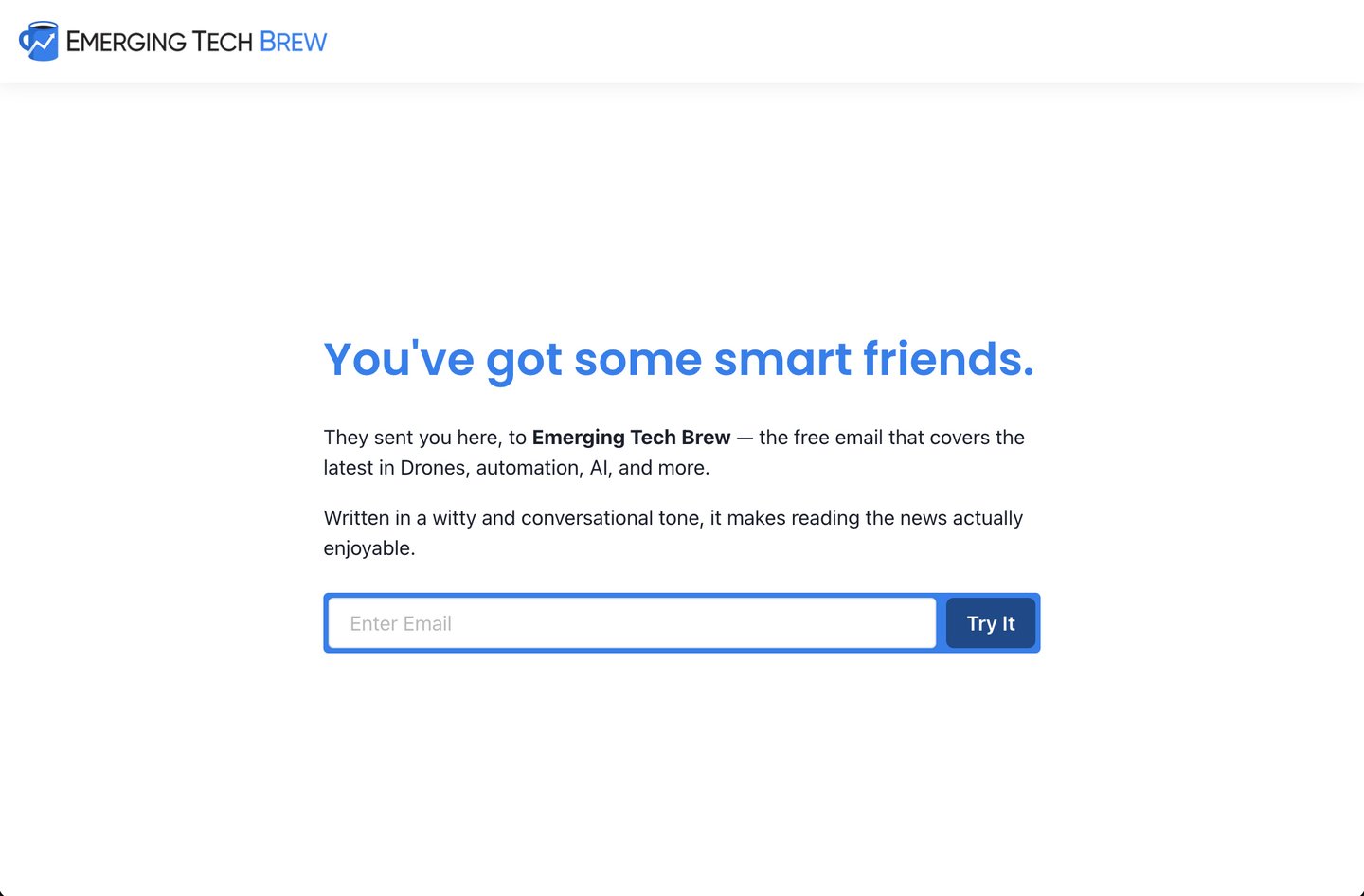
Another flow is asking people to refer-a-friend in order to get faster access to something. Here, the user:
Signs up to a waiting list -> You ask them to refer people in order to get higher in the queue. Here’s one example:
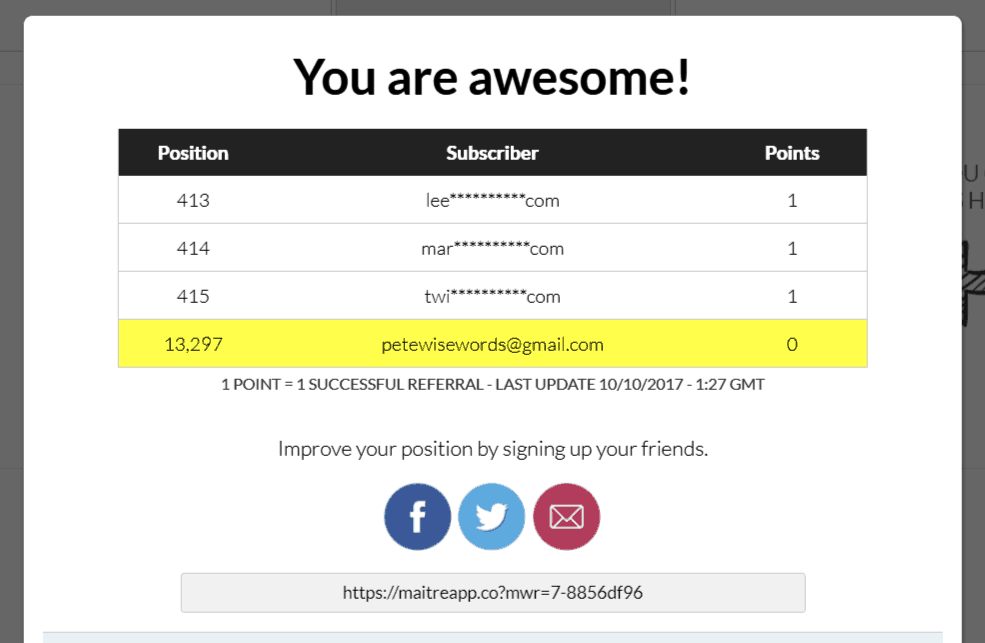
when
The flywheel: This is the easiest way to get new users from your existing users.
Just think about it: In theory, if you can get 10 users to refer 3 more users, that’s like saving 30% on marketing.
Let’s explore some more complicated approaches.
Target a segment of your audience which has exposure
Have you heard about Cameo? It’s a service where you can request personalized videos from your favourite celebrities.
Cameo engineered word-of-mouth by targeting celebrities first. Each of those celebrities has a large fan base. A few of those celebrities posted their Cameo gig on their profile, causing their fans to sign up and buy the service.
Another software tool that got traction using a similar approach is Community. Community targeted celebrities, which resulted in social media posts like these:
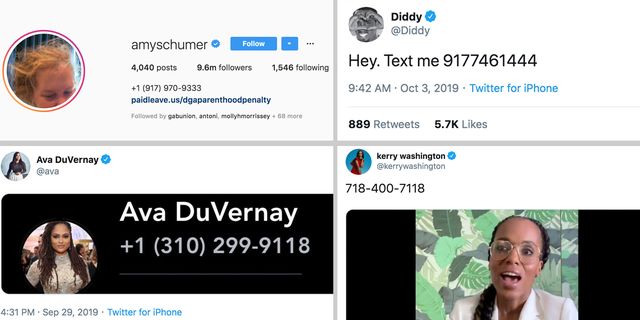
After texting those celebrities, you’d get a message like this:
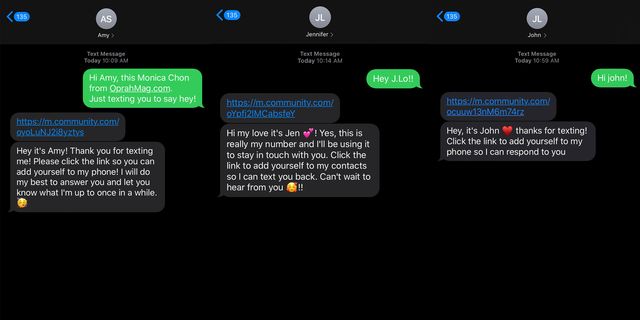
Notice the “m.community.com” link? A bunch of major news websites like Oprah got curious about this company, which resulted in plenty of free exposure for Community.
Both Community and Cameo targeted people with lots of exposure first, who then targeted their fans.
Here are a few more examples:
-
Doordash recruited restaurants. Those restaurants then told their existing customers that they can take delivery from Doordash. This caused the customers to sign up for Doordash.
-
Kickstarter recruited creators, who then posted their innovative projects and told their exsting fans and friends to sign up and support the project.
-
Etsy recruiters sellers, who then told their existing clients that they sell their products on the platform.
The keyword here is “existing”. Is there a segment of your users who have their own audience? Is their audience your audience as well? That could be a good place to get started.
The “I want to become like you” word-of-mouth approach
Imagine you take an Uber/Lyft. You talk to your driver and he mentions that the pay is good. You think, and after a few days you sign up as a driver yourself.
Or you book an Airbnb and see that the flat is overbooked at $100/day. You have a spare apartment yourself so that gives you an idea to offer your home available for guests as well.
The COO of Square shared this insight in the yearly days of the company:
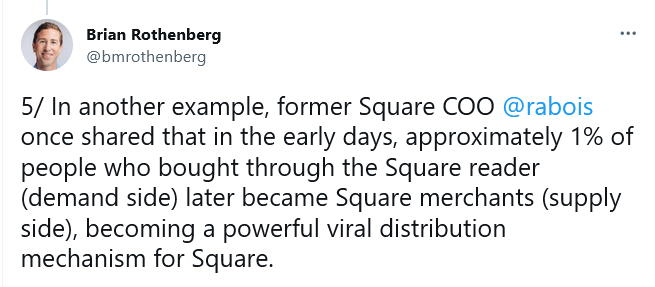
According to Lenny Rachitsky, who worked with Eventbrite, 34% of event creators reported that they first learned about Eventbrite by attending events created by other Eventbrite creator.
What do all these examples have in common? When you serve 2 different types of audiences (let’s call them audience A and audience B), often one audience is bigger than the other. Let’s say audience A is 30 times bigger than audience B.
With this insight, you now know that a certain % of audience A can also become audience B. And you can be proactive about converting that % from audience A to audience B.
How? There are a few simple changes you can do. When you go to any listing on Airbnb, for example, you’ll see this at the top:
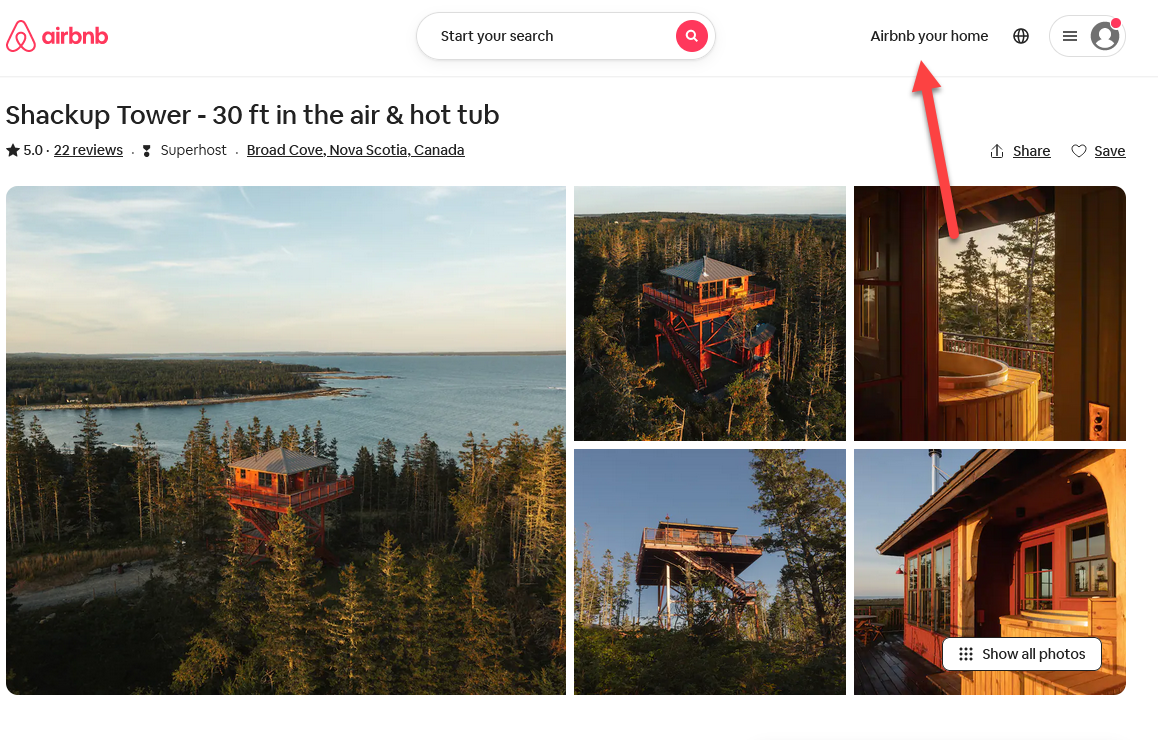
A clever link that nudges Airbnb travelers to become Airbnb hosts.
Lenny Rachinsky reported that they did the same thing for Everbrite (adding a nudge for event attendees to become hosts on the site, in various welcome emails, on ticket recipets, etc.) This resulted in a significant increases of the % of visitors who also wanted to become hosts.
Put a clear credit on the output your customers create
If you have a live chat widget, for example, your customers probably place it on their site:

Notice the “powered by LiveAgent” button? That button has been responsible for a around 50% of new users to the platform:
One of the friends was a local web hosting company. After they started using LiveAgent, we noticed that three out of four other leading local web hosting companies started using it as well, and they all continue to use it now.
Word of mouth and branding displayed on our widgets such as “Live Chat Software by LiveAgent” were bringing in 50% of new leads… (source)
The output: An embeddable window on a web page
The credit: A “powered by” button.
This principle is more widespread than you think:
- Substack: When you see a blog post on the platform, it’s usually on “blog_name_here.substack.com”. In case you’re not sure what Substack is, they give you a hint in the footer of each article hosted on Substack:

- Dropbox has a feature where you can share a folder/file. And the file is hosted on…”dropbox.com/s/file_id_here“. After a few seconds, you get a pop-up nudging you to sign up:
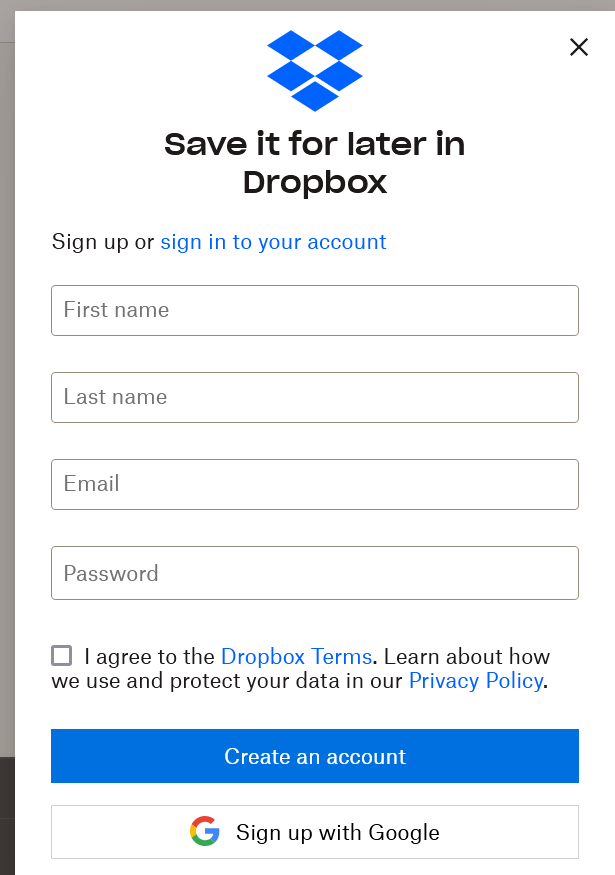
Ask yourself: How can you take more credit for the output your users create?
- If the output of your product is an embeddable widget, have a “powered by” button
- If people can share something with your product, make it so it’s hosted on your domain (so other users can see that clearly).
Use the output of your users as input to other marketing channels
Pinterest and Indie Hackers are 2 good examples on this.
On Pinterest, a user creates an image, which Pinterest then exposes to search engines. After direct traffic, search traffic is the biggest marketing channel for Pinterest:

Word of mouth does not have to be left to chance
If you have a software product, there are many approaches you can take to be more deliberate about incorporating word-of-mouth in your own product.
We’ve explored a few of them above. Have anything to add that I didn’t cover? Let me know in the comments below.


